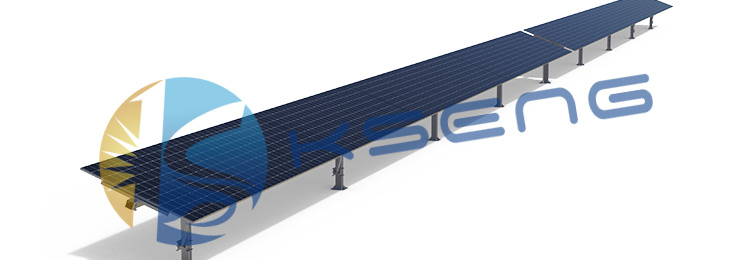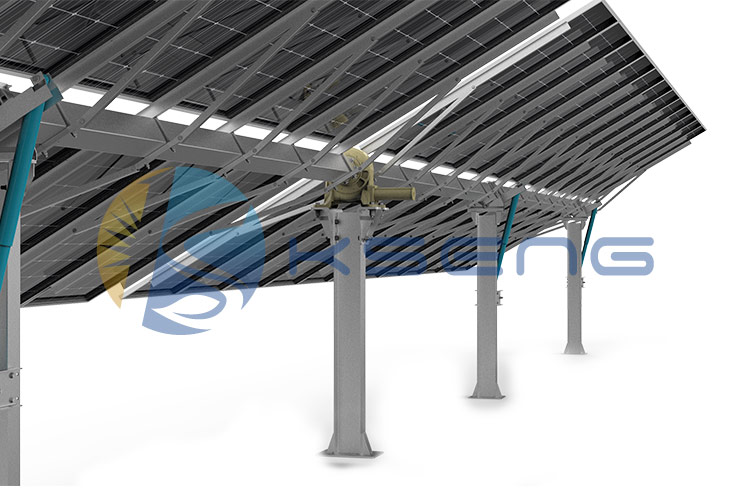Single-axis solar tracking system adjusts the position of a solar panel along an axis. This is done to ensure a small angle of incidence or the angle that sunlight hits a solar panel. Since the energy output of a solar system increases as the angle of incidence decreases, keeping this angle as small as possible is ideal. Active trackers rely on powered machineries such as gears and motors to move solar panels, whereas passive trackers achieve motion via compressed fluid that shifts sides when heated by the sun, changing the tilt of the panel along with it. Some trackers keep panels aligned with the sun by moving them in the opposite direction of the earth’s rotation, and others determine an optimal panel angle based on latitude and longitude data obtained through GPS.

In addition to varying methods of motion, solar trackers differ in terms of the number of axes on which they move. Single-axis tracking systems tilt on one axis, tracking the sun as it moves from east to west during the day. Dual-axis tracking systems tilt on two axes, not only following the sun from east to west but also north to south, allowing solar panels to adjust to the changing angle of the sun from season to season. Since dual-axis tracking systems are only needed in specific situations, such as when space is more of a concern, we’ll be focusing on single-axis tracking systems.

Solar trackers can increase energy production by up to a third or more versus a fixed system. This means that more energy can be produced without needing to increase the size of the system, making for smarter use of land. While the energy generation benefits are clear, there are some things to consider when deciding if a single-axis tracking system is suited to your site’s needs. Installation costs are generally higher, as there is often more work to be done in prepping the site. The need for periodic upkeep and repairs must be considered too, as trackers utilize moving machinery. Single-axis tracking systems also tend to weigh more than fixed systems, so use in ground-mounted solar is preferred over roof-mounted solar. When deployed under the right conditions, solar trackers can add significant value to the system by boosting energy production that quickly makes up for these initial costs.